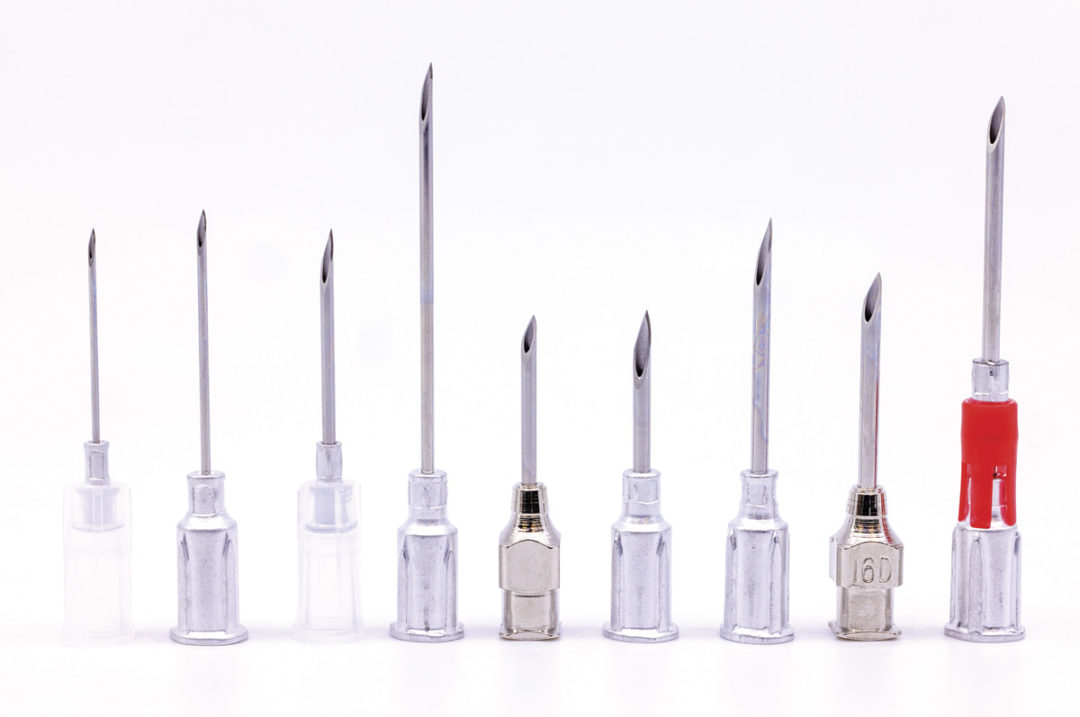Size matters in all kinds of scenarios. You have to wear the right size of boots when you work cattle in the mud, or your socks might get muddy. You have to know what size shirt your wife wears when you are buying her a Valentine’s Day gift, as being wrong might not lead to marital bliss. Size matters at the headgate of your working chute. Size especially matters when it comes to needle selection as you treat or vaccinate calves. Needles that are the incorrect length or diameter can cause serious issues.
Most of us have given injections for years, and most administration decisions are simply done the way Grandpa used to do. However, things have evolved since Grandpa started farming, and the way we treat animals is no exception. Being a part of a progressive industry requires each one of us to do our part. So, step up to the plate, grab your needle and syringe, and remember the key points below.

Key considerations
First and foremost, you need to read the label and determine if you are giving a subcutaneous or intramuscular injection. Then, you need to get a weight on the animal. This is not only for the proper dosage of antibiotics but also for the proper selection of needles. Lighter calves require shorter and smaller-diameter needles, while heavier animals require longer and larger-diameter needles. It is important to note that the diameter decreases as the number of gauge increases.
If you select a needle that is too short, your injection won’t enter the correct tissue, and absorption of the product can be altered, resulting in failed efficacy. If the needle is too long, then you can experience wrong delivery, and the product could be delivered into the muscle or – on a young animal – there is potential to strike the bone or a nerve, resulting in potential harm.
If you have been to the doctor recently, you can understand the value of the discussion regarding the gauge of the needle. In cattle, the viscosity and volume of the product being administered impact gauge. On a cold day with a thick antibiotic, you might have to use a smaller gauge (larger diameter) than you would for a vaccine on the same animal under different conditions.
Hub material is another differing factor among needles. There are two primary options: poly hub or aluminum hub. Poly hub needles should be utilized for smaller animals and single administrations, as they have less durability and strength. Aluminum hubs will provide you with a stronger, more durable product and should be used on larger animals and/or when a higher number of head are being processed.
Last, but certainly not least, is the value of a sharp needle. While we all function on a tight budget with small margins, a needle is not the place to skimp. Never use a bent needle, and never attempt to straighten a bent needle. A sharp needle will eliminate tissue trauma, so train your crew on Beef Quality Assurance (BQA) standards and proper needle selection. Don’t try to stretch the life of the needle too far, as you will be more likely to break the needle. Due to the chance that a needle could break, and the implication that has for customer health and satisfaction, it is highly recommended to utilize detectable needles that can be easily found by the metal detectors of the processor. The only needle 100% detectable will be made of stainless steel alloy. The value of that investment is paid for in consumer trust and satisfaction, as there isn’t a single person who wants ground metal to be part of their experience while eating meat.
When an animal is given an improper injection, the result can be product loss through trimming or carcass condemnation. While many of us do not personally experience the loss of income from pounds lost on hot carcass weight due to trimming product, the day is coming when we will all be held accountable through systems that track an animal from the gate to the plate. Looking to the future, traceback to each producer – through the utilization of blockchain or credits or debits given to our carbon footprint – will afford us opportunities to improve. Let's make the decision now to embrace best management practices.







